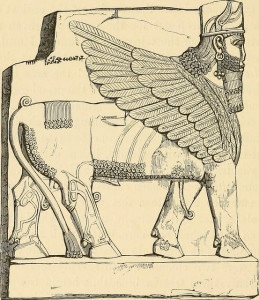 The turmoil in the Middle East has led to a rise in antiquities smuggling. Various terrorist and rebel groups throughout the region have gained access to museums and archeological sites with valuable and irreplaceable artifacts. Selling artifacts on the black market has proven to be an important source of revenue to some groups, including the Islamic State (also known as ISIS and Daesh). This kind of profiteering has led to many unsanctioned excavations under dubious conditions. Who knows what kind of artifacts are being dug up?
The turmoil in the Middle East has led to a rise in antiquities smuggling. Various terrorist and rebel groups throughout the region have gained access to museums and archeological sites with valuable and irreplaceable artifacts. Selling artifacts on the black market has proven to be an important source of revenue to some groups, including the Islamic State (also known as ISIS and Daesh). This kind of profiteering has led to many unsanctioned excavations under dubious conditions. Who knows what kind of artifacts are being dug up?
The Men Who Smuggle The Loot that Funds ISIS: “The main trade is in stoneworks, statues and gold, and it can be extremely lucrative. “I have seen one piece sold for $1.1m,” he says. “It was a piece from the year 8500BC.”
ISIS Cashing in on Looted Antiquities to fund Iraqi Insurgency: “Since the beginning of the Syrian civil war, looters have pillaged many of its important archaeological sites for marketable artifacts. For example, Google Earth images of the ancient city of Apamea—founded by one of Alexander the Great’s generals and nominated in 1999 as a UNESCO World Heritage site—clearly reveal the massive destruction that followed the onset of the war. In less than nine months, from July 20, 2011, to April 4, 2012, the once pristine area was riddled with looters’ holes”
ISIS’ Antiquities Sideline: “ISIS does not seem to have devoted the manpower of its army to the active work of looting archaeological sites. Rather, its involvement is financial. In general, ISIS permits local inhabitants to dig at these sites in exchange for a percentage of the monetary value of any finds…ISIS leaders have encouraged digging by semiprofessional field crews. These teams are often from Iraq and are applying and profiting from their experience looting ancient sites there.”





